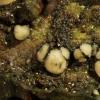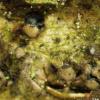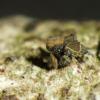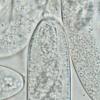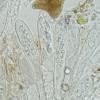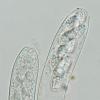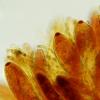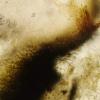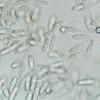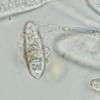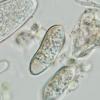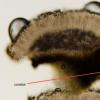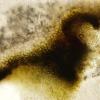
01-01-2026 18:35
Original loamy soil aside a artificial lake.The co

31-12-2025 19:27
Collected from loamy soil, at waterside (completel

30-12-2025 16:44
Pascal DucosBonjour,Une anamorphe rose stipitée, très nombre

30-12-2025 17:14
 Bernard CLESSE
Bernard CLESSE
Bonjour à toutes et tous,Pourriez-vous aider Albe

29-12-2025 10:15
Hulda Caroline HolteHello, I found and collected this propoloid ascom

30-12-2025 09:04
Hello.A Pyrenomycete sprouting sparsely but very d

29-12-2025 17:44
Isabelle CharissouBonjour,J'aimerais savoir si d'autres personnes au
this fungus was collected by a friend on a dead, corticated branch of Malus. At first I didn't even think that it might be a Pezicula because of the conspicuously dark outside. According to Verkley (1999) there are five taxa on Malus: P. corticola, P. sepium, N. alba, N. malicorticis and M. perennans.
P. corticola apparently comes close but I'm not sure if it can have such a dark outside. Other than that, it seems to fit well.
P. sepium can probably be excluded due to its ascospores having a smaller L/W ratio.
N. alba and N. malicorticis can be excluded due to having different conidia.
N. perennans probably comes closest. Verkley mentions (under N. malicorticis) a darker tissue that lines the discs, maybe that corresponds to our material? Difficult to say without images to compare...
Overall, I think that this collection is either P. corticola or N. perennans, more likely the latter. Does anyone have any experience with this group?
The ascospores measure 19.5-22.5 x 6-8 µm. The images attached to this post show the sexual state. I will show images of the anamorph in the next post.
Best wishes,
Gernot
Thank you!

I think you can exclude Pezicula as longa s Neofabraea is accepted as a separate genus. Indeed the whitish hymenium and dark brown exterior are typical.
This genus seems to be tricky, I have no clue to distinguish these species. Maybe you know by drawing of N. cf. alba (HB 4025) in my Neofabraea folder. the conidia there are much larger than yours, but the ascospores are similar.
There exist sequences of different species, so this could be an approach to come nearer to the truth....
Könntest du mir bitte deine Fotos per Mail schicken, dann spare ich mir das mühsame Herunterladen?
Zotto
thanks a lot for your response. I am already pretty happy to know that this is a Neofabraea rather than a Pezicula.
What still confuses me is that the authors of the following paper write "The apothecia of Neofabraea and Pezicula are similar, but excipular tissues are less differentiated in Neofabraea", since I would estimate that the excipulum of our fungus is rather well-defined, and it looks like this is the case in your N. cf. alba too.
I think I collected the same/similiar species and got stuck at the same place as you.
Mine were quite senescent and likely developed in bad conditions.
Nevertheless, the spore size fits, the dark margin as well.
One thing I dont see in your photos is the pruinose margin - crystals were outside and in outermost cells of ect. exc.
Zottos N.alba seems very similiar aswell. I havent seen pycnidia in my sample, will try to look for them.
https://drive.google.com/open?id=1uNj4xkWQvqn90tBy7kI3zA0ve5SmRSqz
thanks for sharing! Our fungus was also collected together with Tympanis alnea, for what it's worth. It would be great if you found conidia in your sample but I do wonder if they are generally still present in senescent material.
Best wishes,
Gernot

Gernot: your link does not work on my computer (server error).




